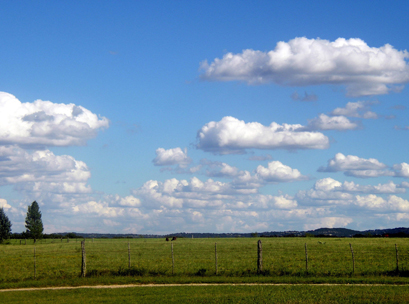 Australian rural confidence has rebounded to a four-year high, with close to half of the nation’s farmers expecting conditions to improve over the coming 12 months, the latest quarterly Rabobank Rural Confidence Survey has shown.
Australian rural confidence has rebounded to a four-year high, with close to half of the nation’s farmers expecting conditions to improve over the coming 12 months, the latest quarterly Rabobank Rural Confidence Survey has shown.
Beef, sheep, and grain producers drove much of the upswing in confidence, buoyed by the price outlook and production prospects – particularly for the upcoming harvest.
While across all commodities, 57 per cent of farmers reported an increase in productivity levels over the past five years.
After moderating last quarter, farmer confidence levels bounced back above the highs seen at the beginning of the year, the latest survey – completed last month -has shown.
A total of 47 per cent of farmers said they expected conditions in the agricultural economy to improve over the coming 12 months. This was up from 38 per cent with that view in the previous quarter.
A further 37 per cent expected conditions to remain stable, while those with a pessimistic outlook stood at just 13 per cent.
Rabobank group executive for Country Banking Australia, Peter Knoblanche, said an overall level of optimism was prevailing across much of the sector with strong commodity prices, generally favourable seasonal conditions and low currency and interest rates.
“Farmers are also generally positive about the future of the industry with agriculture increasingly recognised as an important pillar of the economy,” he said. “This has been demonstrated in initiatives like the Federal Government’s recent Agricultural Competitiveness White Paper.”
Knoblanche said farmer confidence was also apparent in the strong investment intentions seen in the survey, with 25 per cent of farmers looking to increase their on-farm investment.
Commodity prices were a big cause for optimism among beef, sheep, grain and cotton producers this quarter. Overall, 74 per cent of farmers surveyed who expected conditions to improve identified rising commodity prices as reason for their optimism – up from 63 per cent last survey.
Outside of regions continuing to be impacted by drought, seasonal conditions also remained a significant driver of positive outlook – nominated by 48 per cent of those expecting conditions to improve.
Other factors underpinning confidence were the state of overseas markets (cited by 21 per cent), ‘improved marketing’ (16 per cent) and the lower dollar (16 per cent).
Productivity
Farm productivity levels were also surveyed this quarter, with 57 per cent of farmers reporting they had boosted their farm productivity levels over the past five years.
Productivity growth had, however, been static for 25 per cent and productivity declined for 18 per cent.
For those who recorded growth in productivity, factors most contributing to this included investment in infrastructure, research and development, better access to global markets and accessing the latest information.
Knoblanche said the results also highlighted the need to reverse the declining growth in public R & D spending and to provide access to new technology and genetics to ‘unlock’ future productivity growth.
“Productivity was stagnant in a quarter of farms and going backwards in a further significant number, so reviving this growth is a particularly pressing issue, given the rise of emerging low-cost food and agricultural export competitors,” he said.
Knoblanche said the drought had understandably slowed productivity growth across much of Queensland, with farmers putting a hold on capital expenditure plans and committing their resources to emerging out of the drought in the best position possible.
Farm business performance, income and investment intentions
In line with their upbeat outlook for the agricultural economy as a whole, Australian farmers were also more positive about prospects for their own farming businesses.
This quarter, 85 per cent of the nation’s farmers expected their business performance to either improve (44 per cent, up from 40 per cent) or remain the same as last year (41 per cent).
This was largely due to strong income projections, with 41 per cent of the nation’s farmers expecting higher gross farm incomes over the coming 12 months – underpinned by healthy income expectations in the beef sector, but with income outlook among sugar producers lagging well behind.
The viability index (which measures farmers’ perceptions of their business viability) remained at its four-year high, with 94 per cent of farmers viewing their business as having long-term viability.
States
Confidence was up across all states, except in Western Australia where it moderated from last quarter’s four-year high.
“We would, however, expect confidence in Western Australia to have picked up since the survey was conducted, as there have been good widespread rains recorded in the state over the past couple of weeks. This has put farmers back on track for an average to above-average cropping season – potentially their third in a row,” Knoblanche said.
Sectors
Stronger confidence was reported across all commodities – except sugar and dairy – with beef producers remaining the most upbeat about their prospects.
A comprehensive monitor of outlook and sentiment in Australian rural industries, the Rabobank Rural Confidence Survey questions an average of 1000 primary producers across a wide range of commodities and geographical areas throughout Australia on a quarterly basis.
The most robust study of its type in Australia, the survey has been conducted by an independent research organisation interviewing farmers throughout the country each quarter since 2000.
The next results are scheduled for release in December 2015.










